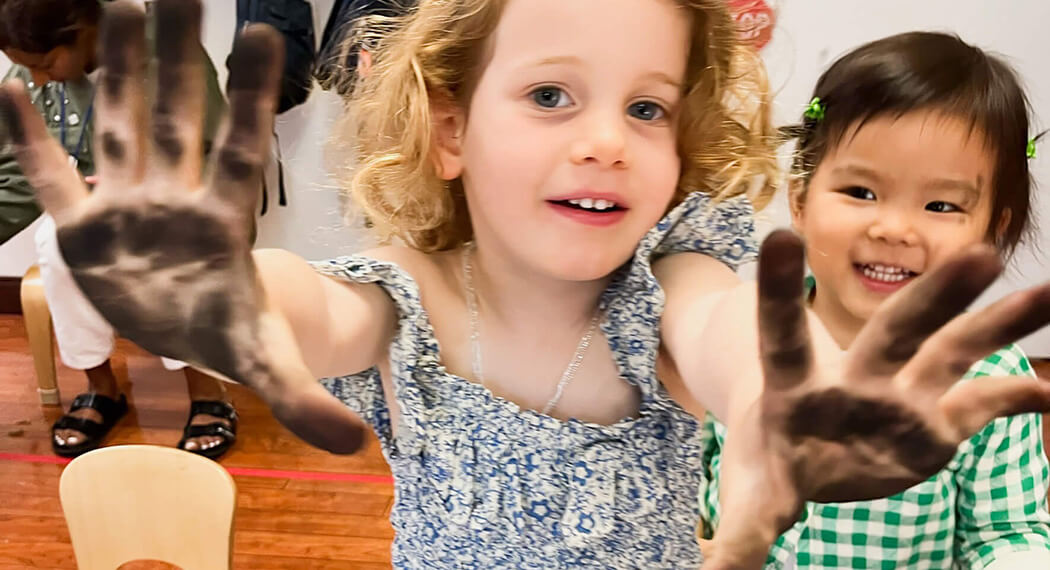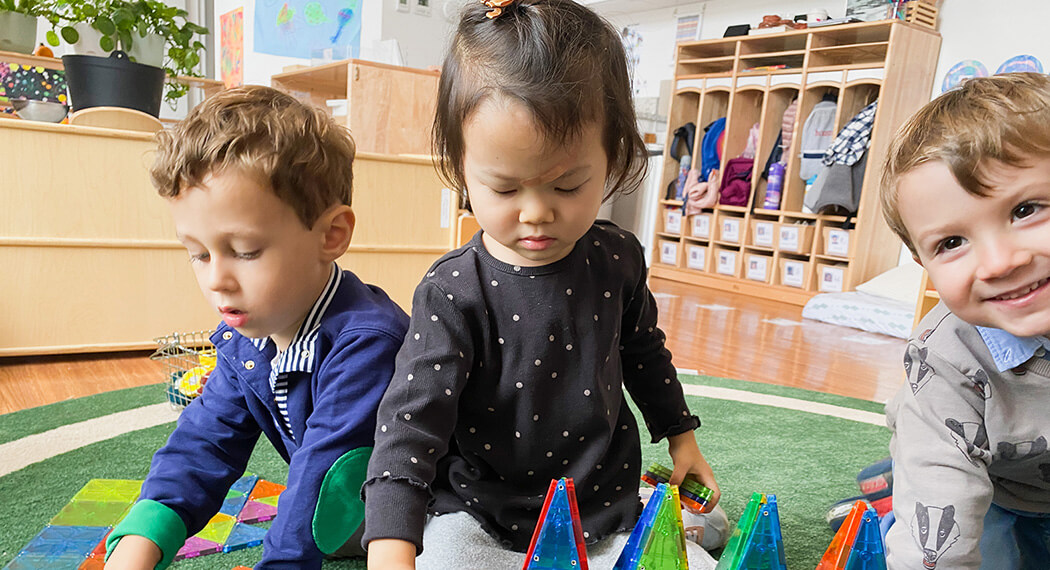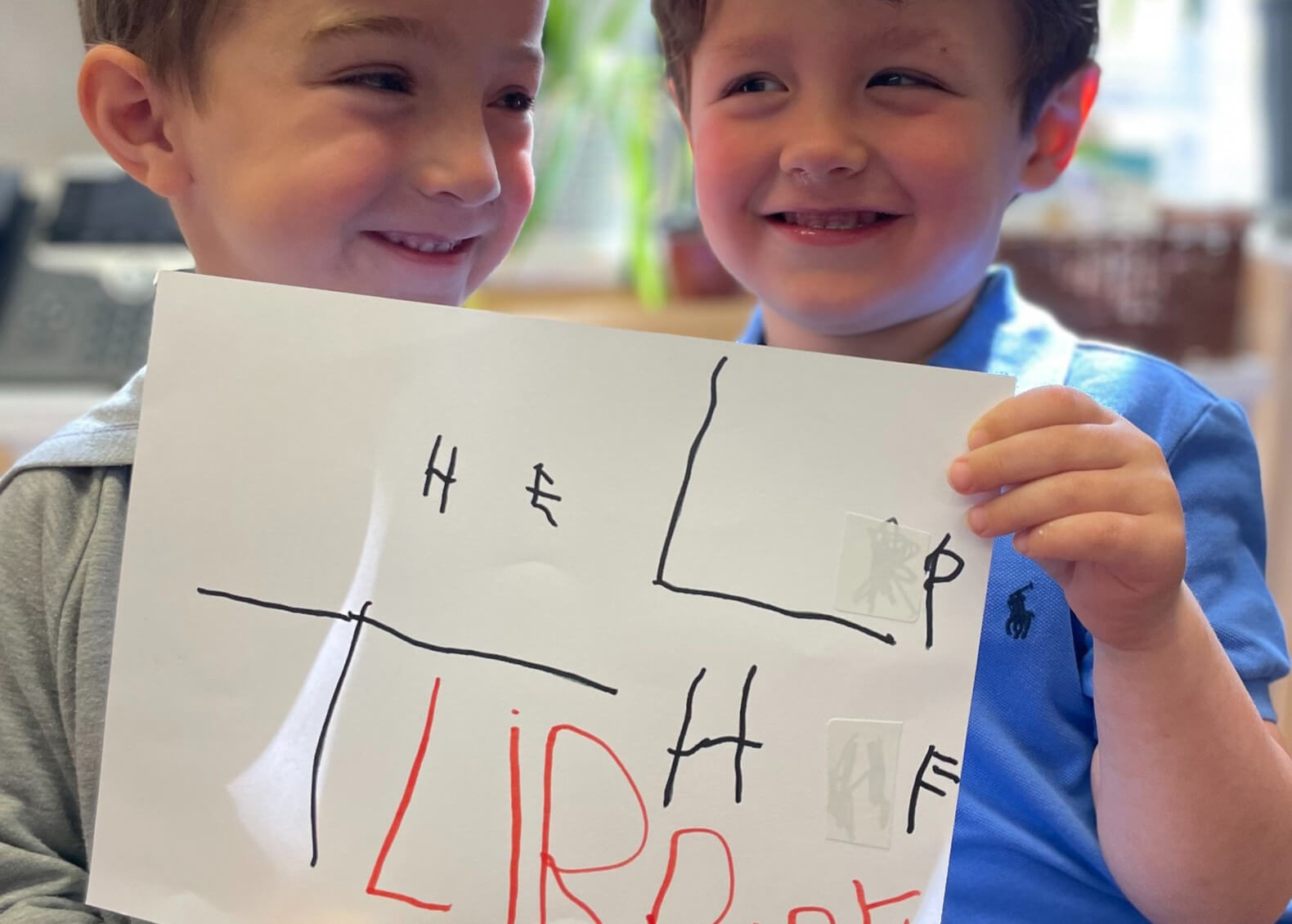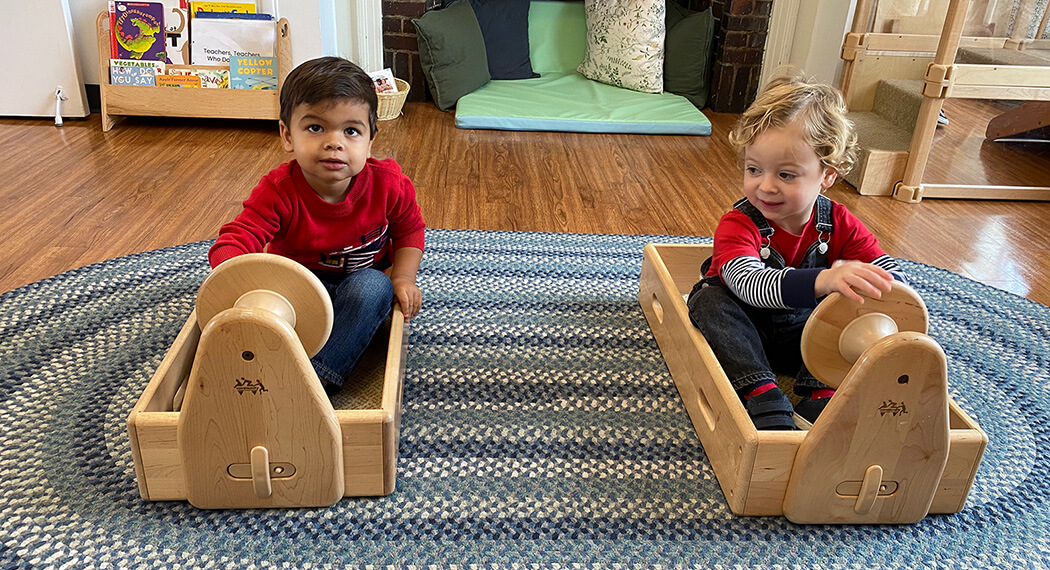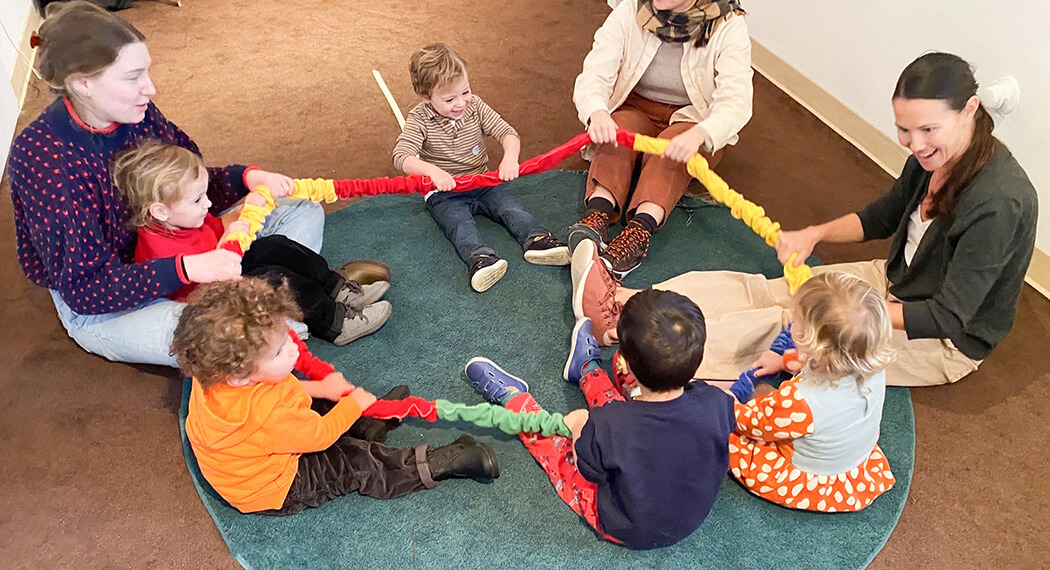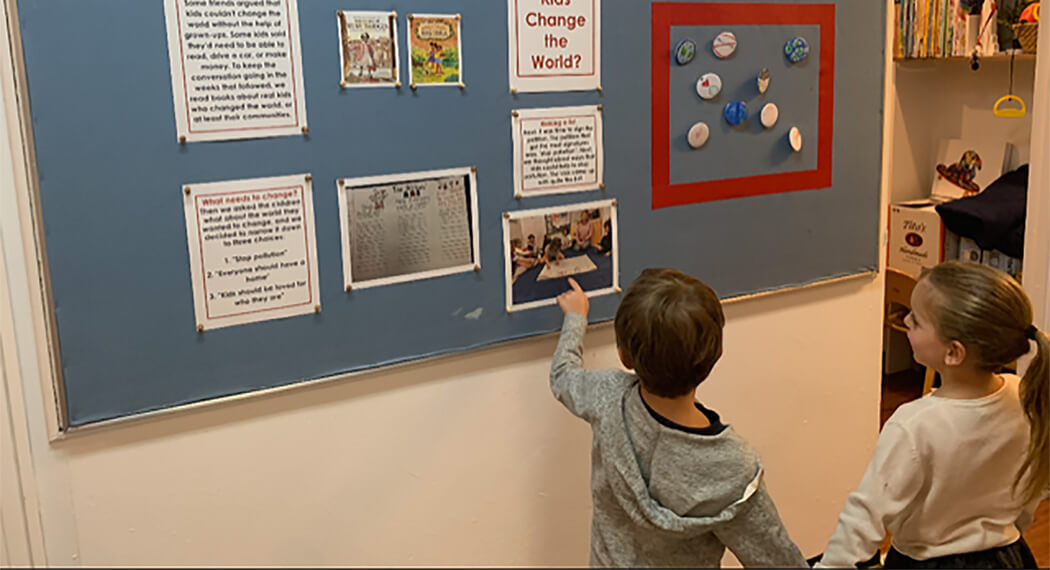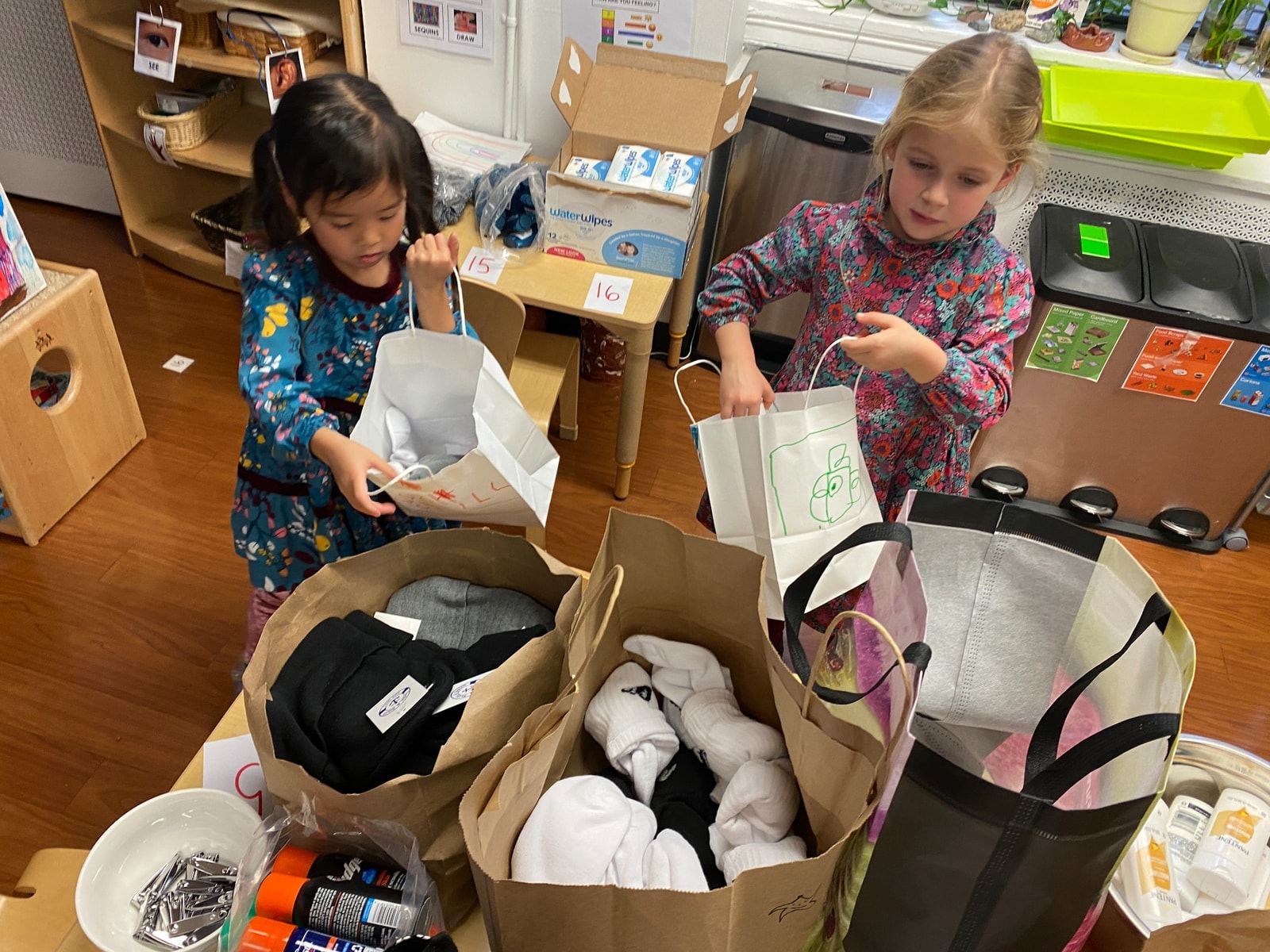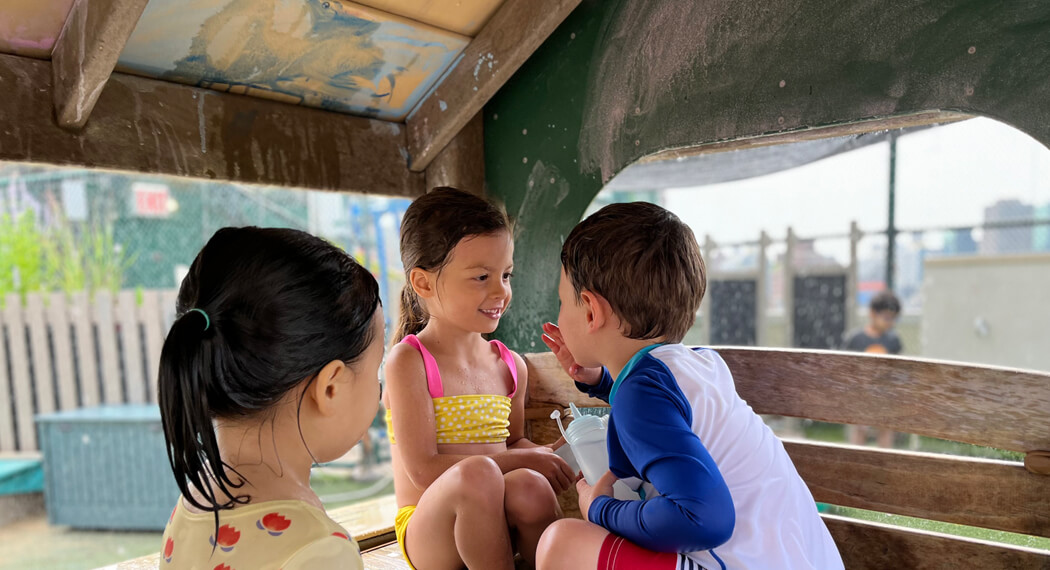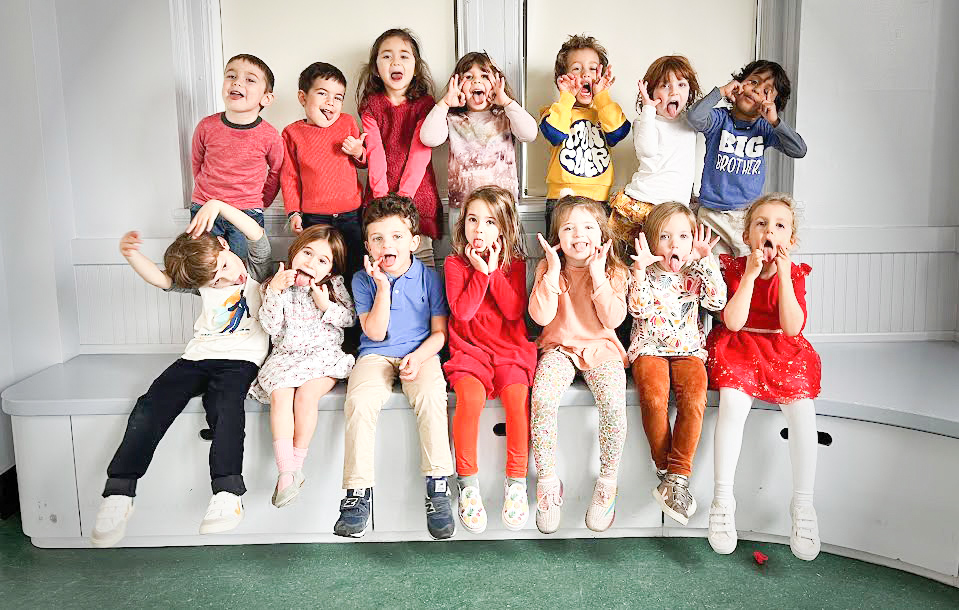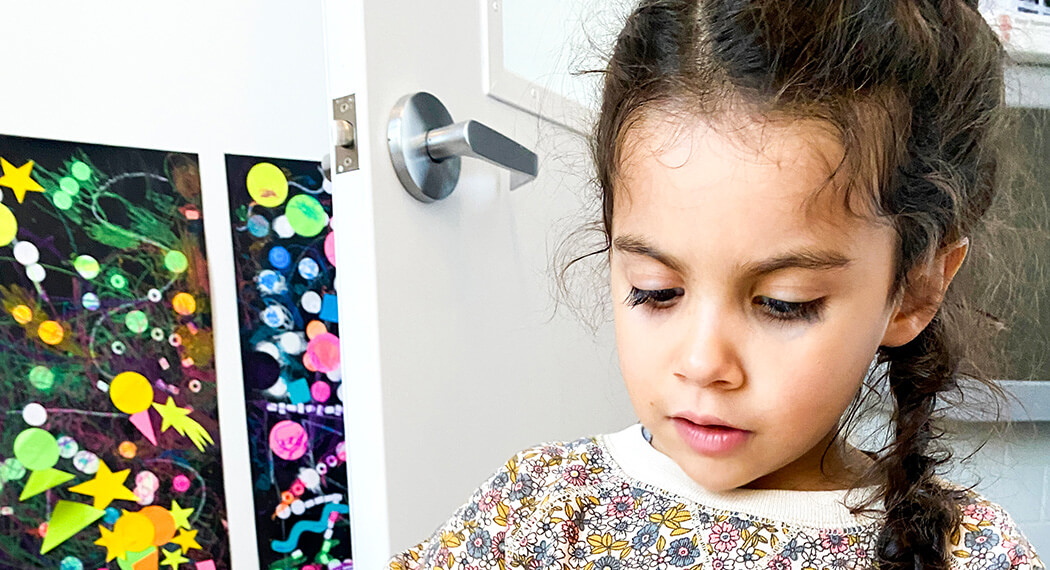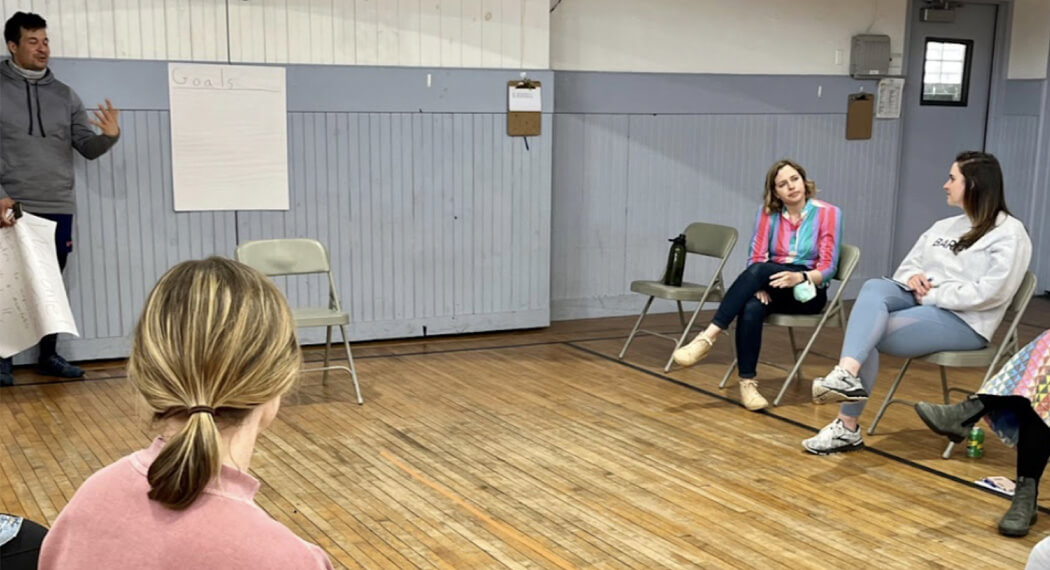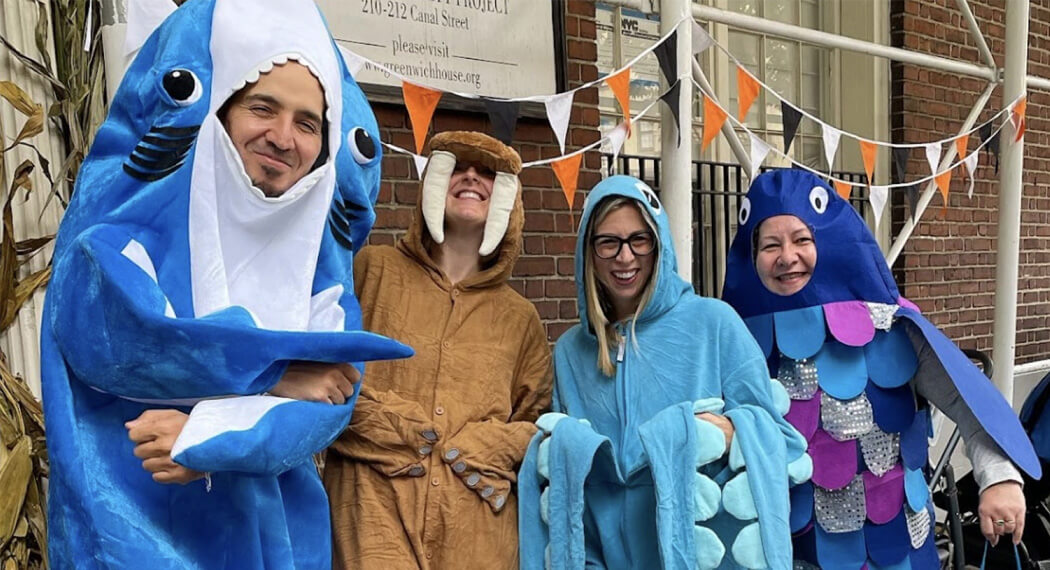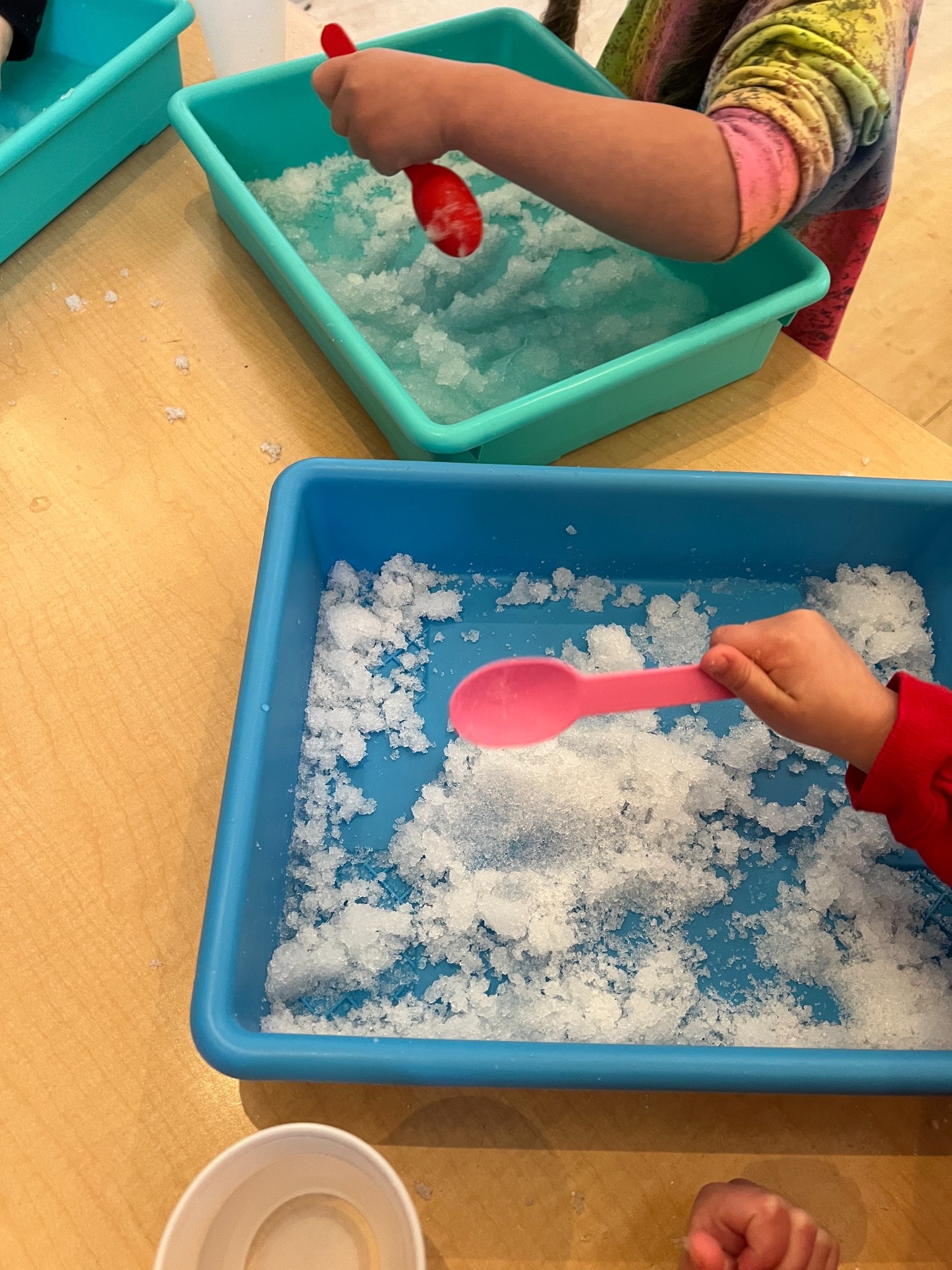The Skeletons have been exploring winter and snow in habitats similar to those where they live in New York State. They have been thinking about how animals survive during winter and what an animal needs for a habitat. The Skeletons know that animals need to be safe and protected and have a place to sleep. Animals also need food and water.
Exploration 1 was making a 2D representation of a winter woodland habitat using strips of paper, tissue paper, and cotton balls. The Skeletons thought about what a winter woodland habitat would look like and added trees, mounds of snow, and ponds or rivers of ice. The use of art in science explorations helps promote and develop creativity in thinking and visualization, assisting the children in making connections to the world around them.
Explorations 2 and 3 used a sensory material, in this case InstaSnow, a polymer-based substance that, when added to water, turns into a snow-like consistency, and adding different woodland and polar animal figures. Sensory materials stimulate our senses and help children interact with, make sense of, and connect to the world around them.
Exploration 2 was just “snow.” The Skeletons were amazed to watch the polymer powder grow and expand as the water was added. They had to adjust the amount of powder to water to make it “just right.” They thought about what it would be like to live under the snow all winter long and wondered how the animals could stay warm and find food. The Skeletons suggested putting the polymer snow in the freezer and seeing if it turns to ice (check out Exploration 3, coming next week).
Exploration 3 – After Exploration 2, the Skeletons asked me why they didn’t have animals to play with in the snow since they were learning about how animals live in a snowy winter habitat. So I agreed to add animals to the exploration the following week (the Skeletons specifically wanted snakes and insects to be added, as well as some polar animals, even though those types of animals lived in a different habitat).




